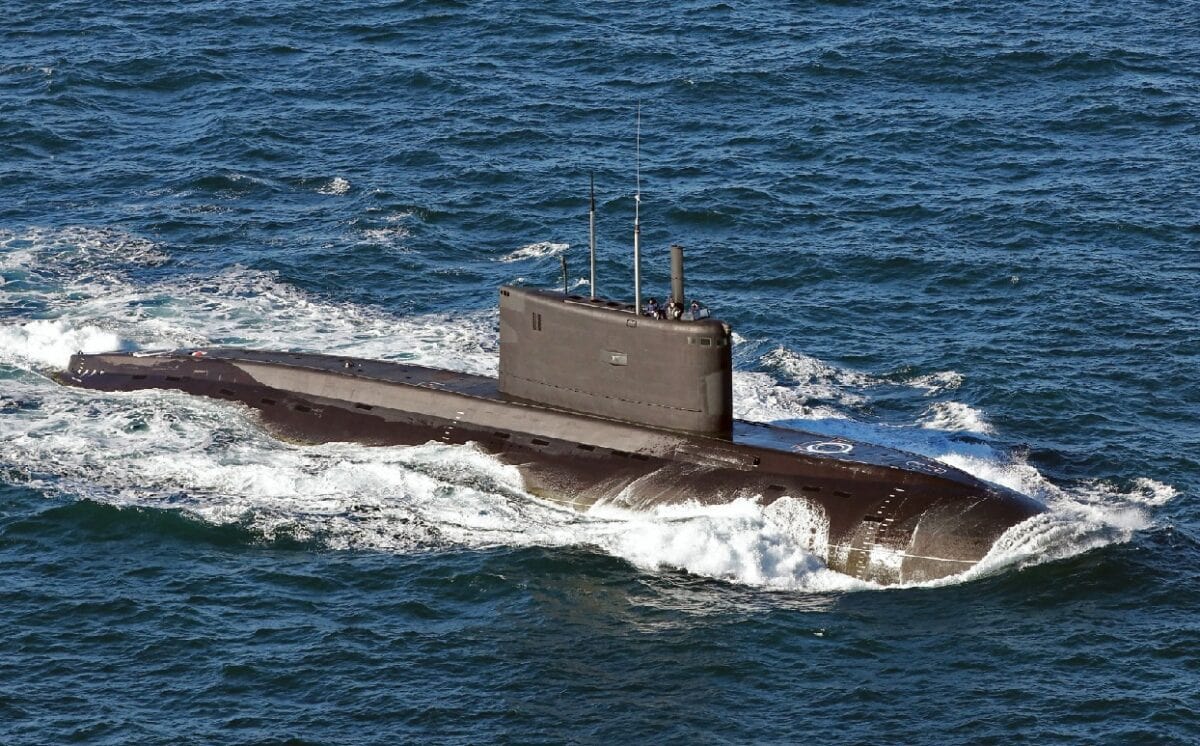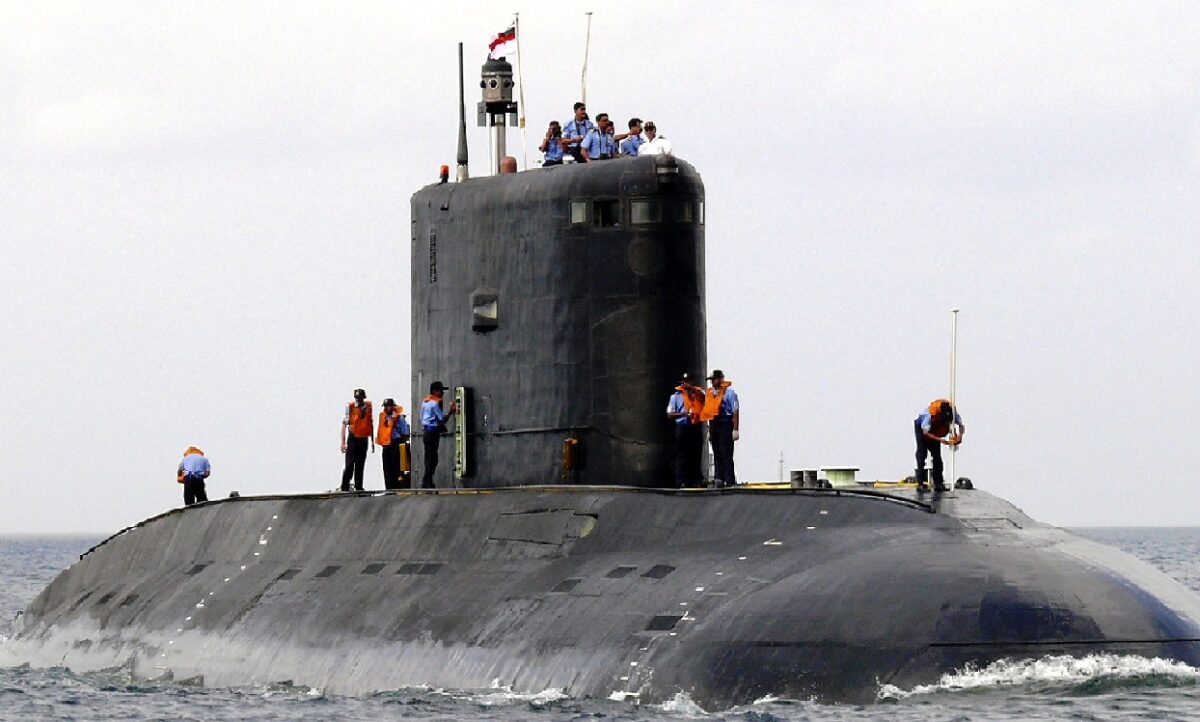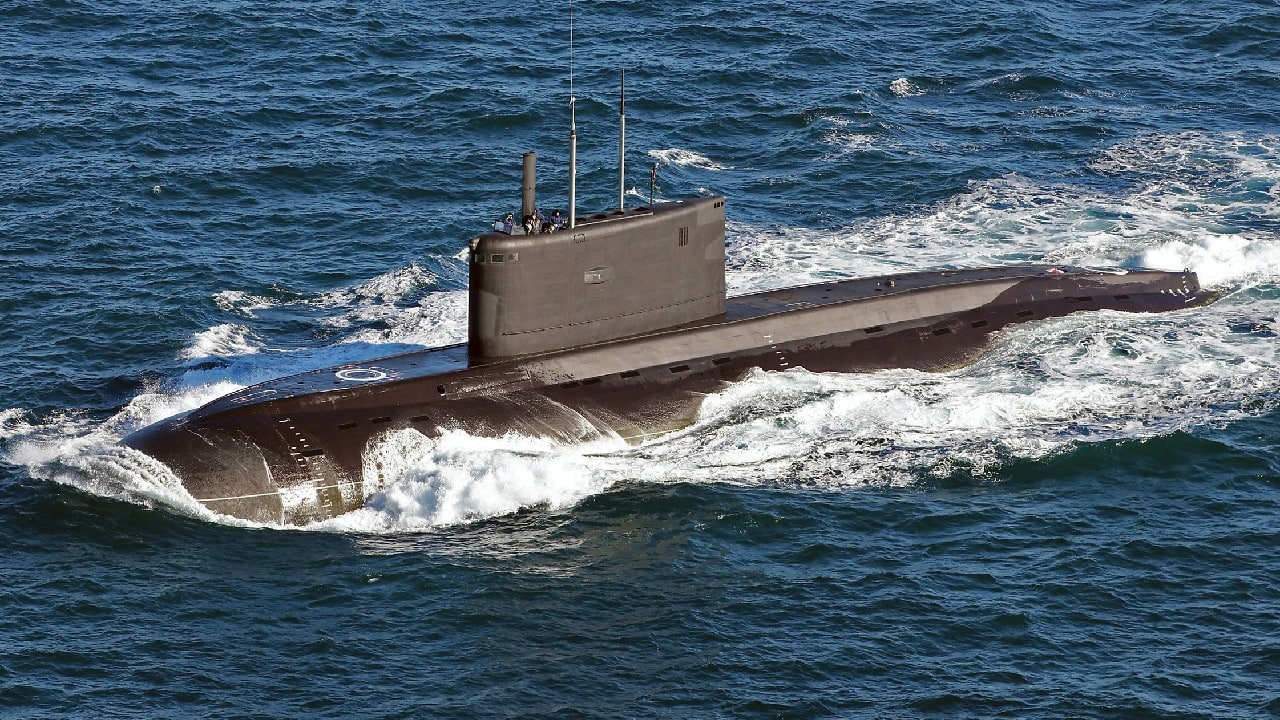The Russian-built Kilo-class submarine recently made headlines following the launch of a Kalibr missile in the Sea of Japan in early March.
Moscow’s Kilo-class submarine Petropavlovsk-Kamchatshy was responsible for firing the cruise missile, a diesel-electric attack submarine currently serving in a few navies around the world.
In addition to sailing for the Russian Navy, the Kilo-class vessels represent Iran’s largest and most advanced submarines.
In fact, the three Kilo submarines serving the Iranian Navy represent the country’s first line of defense in the water. Although the Iranian regime is actively expanding and improving upon the capabilities of its historically small Navy, the Kilo-class will likely lead the service for decades to come.
A Brief Overview of the Kilo-Class Submarine
Originally designed in the early 1970s, the Kilo-class submarine was built in the former USSR for the Soviet Navy.
The Kilo class was intended to serve the navies of the Warsaw Pact countries at the time of its development, meant to replace an aging fleet of Whiskey-class and Foxtrot-class vessels.
The Soviet-era submarine class was constructed to perform anti-surface warfare in coastal waters and anti-submarine warfare by being able to detect enemy boats at a range three to four times greater than the vessel itself could be detected.
Measuring around 74 meters long, the Kilo-class boats can carry 18 torpedoes and remain submerged underwater for days at a time. Perhaps the Kilo-class’ most coveted attribute is its silence.
The U.S. Navy even refers to these submarines as “Black Holes,” since their shape and absent vibrations make them extremely difficult to locate.
Iran Desired the Kilo-Class’ Undetectability
The Kilo-class submarines’ sophisticated capabilities immediately intrigued the Iranian Navy, which operates off the coast of Iran, from the Arabian Gulf to the Sea of Oman and through the Strait of Hormuz.
The regime reportedly purchased three Kilo-class submarines between 1992 and 1996 for close to $600 million per vessel, intending to replace its Shah-era fleet of German TYPE 209-class submarines.
Achieving underwater superiority was instrumental for the Iranian regime since it often used its surface ships to harass and attack foreign vessels in an effort to expand its territorial claims to the gulf area.
The Kilo-class Can’t Sail its Two-Thirds of the Gulf
At least two of Iran’s Kilo-class submarines remain operational at any given time in the Strait of Hormuz at Bandar Abbas today.
The vessels also reportedly deploy to the Gulf of Oman, the Arabian Sea, and the eastern mouth of the strait periodically.
However, the Iranian Navy cannot sail these submarines in all of the waters off the Iranian coast. The Kilos require a depth of at least 164 feet to sail, making nearly two-thirds of the Gulf unreachable for the sophisticated submarines. Additionally, unstable water conditions like powerful currents limit the submarines’ operational use.
According to experts, “The water (of the Strait) provides noisy background conditions that help cover up the sound of a submarine, but the shallow waters make the submarine more likely to be visually identified from the air or surface of the water.

Kilo-class Submarine. Image Credit: Creative Commons.

Kilo-class Submarine.
The confined waters and strong currents of the Gulf make the Strait of Hormuz an extremely hazardous place for even experienced submariners.”
Regardless of their limitations, Iran’s Kilo-class submarines are capable of carrying out limited attacks against adversarial vessels.
Iran is also likely outfitting its fleet of submarines to sport more lethal domestically-made weaponry and improvements.
Maya Carlin is a Senior Editor with 19FortyFive. She is also an analyst with the Center for Security Policy and a former Anna Sobol Levy Fellow at IDC Herzliya in Israel. She has by-lines in many publications, including The National Interest, Jerusalem Post, and Times of Israel.

